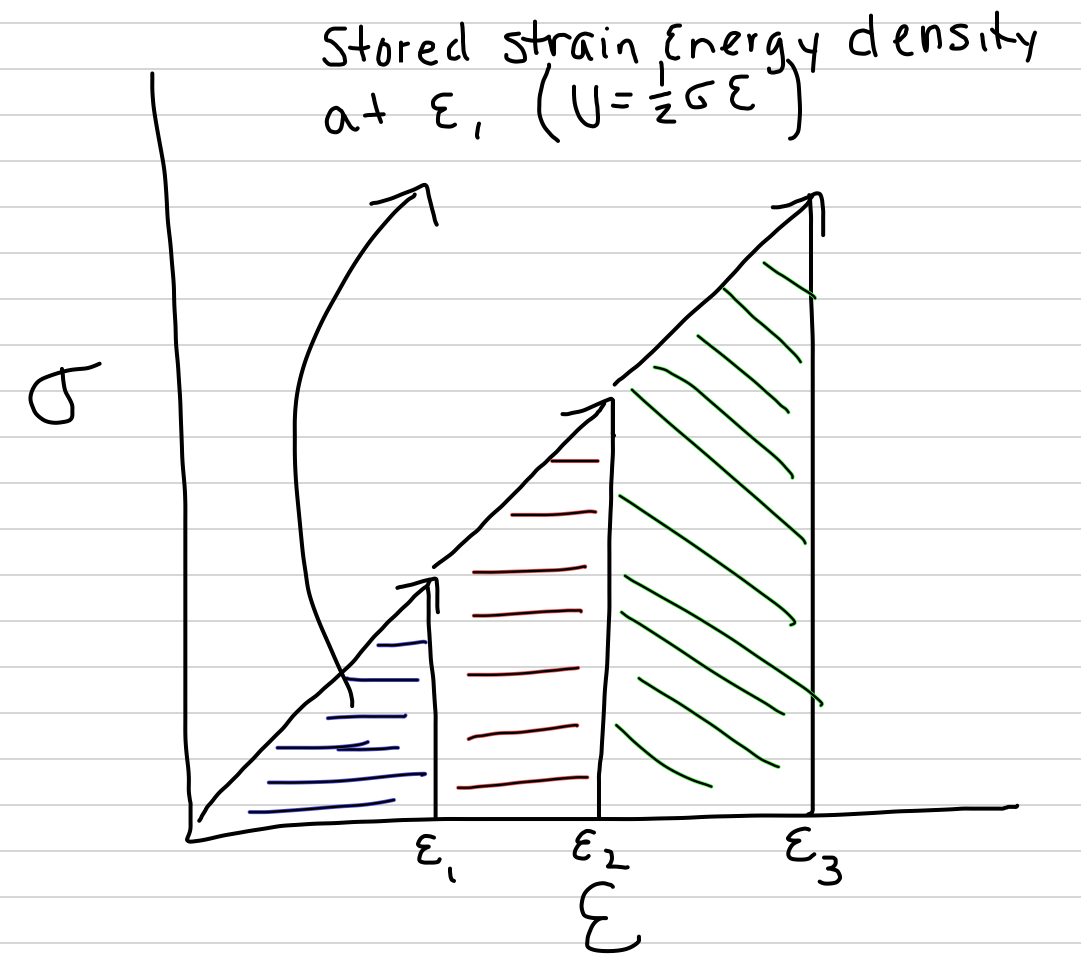2.5 Materials absorb strain energy
 Figure 2.9: The area under the stress-strain curve at any level of deformation is the strain-energy density (the strain energy per unit volume) that is stored.
Figure 2.9: The area under the stress-strain curve at any level of deformation is the strain-energy density (the strain energy per unit volume) that is stored.
Doing work on a structure transfers energy into the structure. This absorbed energy rearranges the atoms in the material. Or, we can think of these rearranged atoms as absorbing or storing the energy. This stored energy is known as strain energy. The magnitude of the strain energy will be a function of both the geometry of the structure and the type of material in the structure. So, to remove the influence of geometry on this measure, we used the scaled force and deformation, \(\sigma\) and \(\epsilon\). For a straight stress-strain curve, this standardized energy is
\[U = \frac{1}{2} \sigma \epsilon\]
Substitute in the equations for stress and strain and this standardized energy is
\[U=\frac{1}{2} \frac{F \Delta L}{A L_o}\]
The numerator of this equation is the mechanical work done on the object, which is also the strain energy absorbed by the material. The denominator is the volume of the starting object. Consequently, \(U\) is volume-standardized strain energy, or strain energy density (this is the energy stored per unit volume in analogy to density, which is the mass per unit volume).